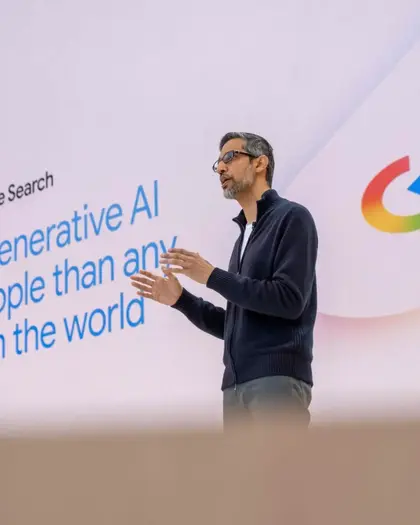It’s official - iOS 14.5 is live and digital marketers are fearing what it will mean for tracking their ad performance now that their lead attribution is limited.
Positioning themselves as the go-to for privacy protection, Apple’s newest update gives iPhone and iPad users full control over how their online behaviour is tracked. So what exactly will that mean for advertisers who use that information to drive their campaigns?
We’re going to cover how the iOS 14 update will impact your ads and how you can optimise your campaigns to fit with Apple’s new rules. First, let’s start with exactly what’s changed in iOS 14.
What’s new with attribution in iOS 14?
The big change that has everyone talking is ATT - App Tracking Transparency. It means that all apps are now required to ask users for consent to track their data. iPhone users have always been able to opt-out of this in their settings, however, not many people knew the option was there. With iOS 14.5, users will be prompted when they open an app. Since implementing the change, data from Flurry Analytics has shown that just 4% of users in the US have chosen to allow apps to track them.
Behind the scenes, this disables Apple’s Identifier For Advertisers (IDFA), a string of numbers that are used to identify Apple devices. If you’re an iPhone user, your phone will have its own unique code or identifier that tracks your browsing, downloads, clicks and purchases. Using this identifier, advertisers previously had access to data that allowed them to target personalised ads and measure how effective their campaigns were. If iPhone users opt-out of sharing their data, it means that advertisers will no longer be able to see their IDFA, which completely changes how attribution works.
How will the iOS 14 update impact your ad performance?
So the attribution you previously relied on for customer acquisition, targeting, conversion tracking and more, is no longer guaranteed. How might this negatively impact your marketing efforts?
Facebook Ads
The main place where you’ll notice changes will be Facebook. Any businesses that use Facebook ads will be affected in two main areas - measuring and optimising their campaigns. Some of the negative changes that Facebook Ads users should expect are:
- Limited conversion tracking - if someone opts in, advertisers will be limited to tracking just 8 events on the Facebook pixel (standard and custom). Prior to the update, there wasn’t a limit on the number of events you could track. If the user opts out of sharing their data, you’ll now be limited to tracking just 1 conversion event.
- Weakened ad performance - fewer data from users will mean that your ad targeting becomes less effective. Without information about their interests or previous behaviours, your custom audiences and retargeting ads are going to be limited.
- Fewer data from attribution windows - 28-day and 7-day view-through attribution windows will no longer be supported. Before the update, you could track someone who viewed your ad but didn’t purchase until 2 weeks later. The new attribution settings will be set to ‘7-day click’, meaning your ad will be optimised for users who are likely to convert within 7 days.
- Delayed attribution - Facebook has also predicted a 3-day delay in conversion reporting as a result of the iOS update, making it even more difficult to optimise your ad without real-time data.
Google Ads
As the iOS update largely affects apps, Google won’t be as impacted by the changes. However, there are still some things that advertisers should keep in mind.
- Measuring ad performance - Google published a blog stating that the iOS changes will “reduce visibility into key metrics that show how ads drive conversions (like app installs and sales) and will affect how advertisers value and bid on ad impressions.”
Youtube ads - As a Google app, Youtube will find it harder to target and retarget personalised ads due to cross-device attribution being limited.
Google has been encouraging app developers and advertisers to upgrade to the latest version of Google Analytics for Firebase so that they can use SKAdNetwork, an alternative ad platform from Apple.
What is the SKAdNetwork?
Apple will now be encouraging SKAdNetwork as a solution to mobile ads without the IDFA. SKAdNetwork is a platform that allows advertisers to measure the success of their campaigns, while still maintaining users' privacy. It’s a ‘last-click attribution’ method, meaning advertisers will be able to track which campaigns lead to purchases or app installations, but not individual data such as who made the purchase and the actions they took beforehand. While this will limit advertisers who are used to obtaining specific data, it’s currently the only alternative. Both Google and Facebook are implementing conversion tracking using SKadNetwork. With Google pushing Apple to make better improvements for advertisers, there’s still potential for the network to become a viable option in the future.
How can I optimise my campaigns to suit iOS 14?
The best approach you can take is to encourage users to opt-in yourself. Apps can share a ‘pre-permission prompt’ that shows before the Apple pop-up (which Facebook has been trialling below). This prompt can be used to show your audience the benefits of sharing their data with you. Research has shown that consumers are more open to personalised ads than you may think - around 70% according to a study by Oxford Economics. Here are some tips to try increasing your opt-in rate.
![]()
- Tailored messaging - Stick to your brand TOV and gain users trust by being open about what you’ll use their data for
- Effective UX Strategy - Full screen prompts and single-button placements have been shown to perform better.
- A/B testing - just like any campaign, test different messaging and creatives to see what resonates with your audience the most.
- Timing - developers are able to time when the prompt will be shown, meaning you could try the prompt after a positive event such as winning a game so that they’re more likely to opt-in.
In summary, it’s likely that your Facebook ads will be the most impacted - but don’t let the changes panic you. Bear in mind that it’s just iPhone users who will be receiving this prompt, and you have the opportunity to increase your opt-in rate with a customised message. It’s early days for these privacy updates, so there’s potential ahead for improved practices from both Apple and Facebook. The best thing you can do is to prepare yourself and stay ahead of the game by making sure your campaigns are compatible with SKadNetwork.






























